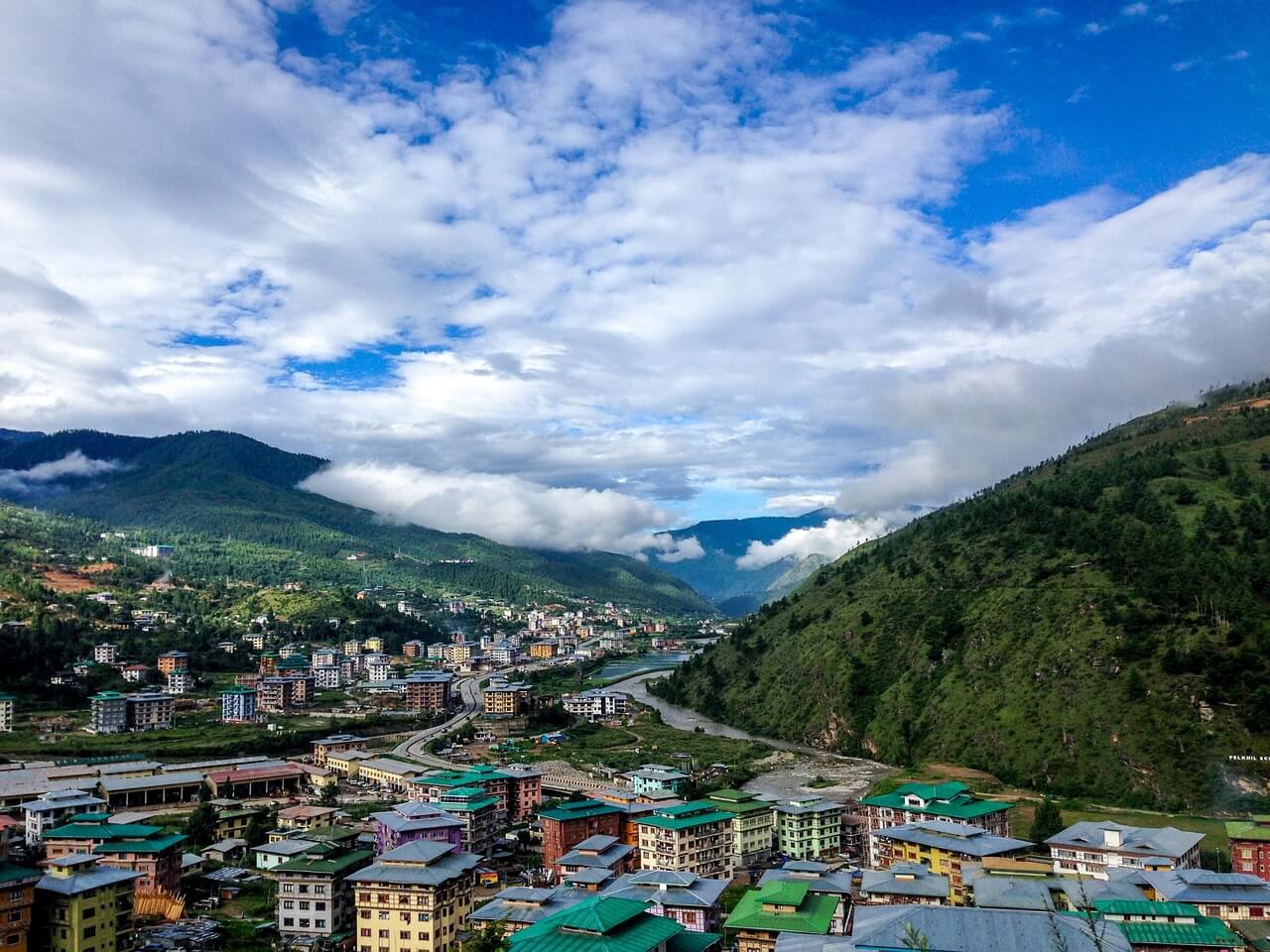When to visit Bhutan during the year?
Bhutan's climate varies significantly with its geography, making it a unique travel destination throughout the year. The best time to visit generally falls in spring (March to May) and autumn (September to November) when the weather is pleasantly cool and clear skies dominate. Summer (June to August) brings quite a bit of rain, especially in the southern regions, while winter (December to February) can be cold but offers a chance to see snow-capped mountains. Popular areas such as Paro and Thimphu are bustling with tourists during these peak seasons, and the Jomolhari Trek is especially favored in spring.
How to get to Bhutan?
Traveling to Bhutan is a unique experience due to its limited access, primarily to preserve its culture and environment. Drukair is the country’s flag carrier, operating international flights, while land access is strictly regulated. Most visitors arrive by air, landing in Paro International Airport, which is the only international airport in Bhutan.
- Main airports include Paro International for flights from Asia, with major routes from Bangkok, Delhi, and other cities.
- Low-cost airlines are limited; flights typically average between $200-$600, depending on the season.
- Flight times vary, e.g., 6-7 hours from Bangkok, 2-3 hours from Delhi.
- Buses connect major towns like Thimphu and Paro, with services primarily run by local operators.
- Main routes include Thimphu to Phuentsholing, suitable for those crossing from India.
- There is no direct train service to Bhutan; the nearest railhead is in India.
- Travelers can take a train to Hasimara and then continue by bus or taxi to the border.
- Main highways link Bhutan's cities like Thimphu and Paro.
- Distances vary, e.g., Thimphu to Paro is only about 50 km (1.5 hours).
- Road conditions can be challenging, with mountainous terrain but no tolls.
Tourist activities in Bhutan
Bhutan offers a wide range of activities that cater to various interests, from nature enthusiasts to culture seekers. Start with trekking in the rugged Himalayas, with popular routes like the Druk Path Trek providing breathtaking views and cultural insights. You can visit stunning monasteries such as the iconic Paro Taktsang (Tiger's Nest), perched on a cliffside, offering both a spiritual retreat and stunning views. If you’re into wildlife, consider visiting the Jigme Dorji National Park where you might catch glimpses of rare species like the snow leopard. Cultural activities abound too; try to coincide your visit with festivals like the Paro Tsechu to witness the vibrant mask dances and rituals. Learn archery, Bhutan's national sport, don’t miss visiting the traditional villages to experience authentic Bhutanese hospitality and cuisine.
Accommodation in Bhutan
Accommodation options in Bhutan vary widely, suitable for different budgets and experiences. Luxury hotels like the Amankora and Taj Tashi offer opulence paired with contemporary Bhutanese architecture. Mid-range hotels are abundant and comfortable, often featuring local designs, with nightly rates starting around $50 to $150. For those looking for something basic, guesthouses and homestays provide more intimate and culturally immersive experiences, often costing under $50. However, during peak seasons, it’s smart to book accommodations in advance as availability can be limited.
Food in Bhutan
Bhutan's cuisine is a vibrant blend of rice, meat, and vegetables, with chili often being a centerpiece. The national dish, Ema Datshi, consists of cheese and green chili with rice, showcasing the country's love for spicy food. Traditional eateries, or 'dzongkha', serve many local dishes; try the buckwheat pancakes and various curries. Dining in Bhutan is generally affordable, with average meal prices ranging from $3 to $10 at local restaurants. For a more upscale experience, many hotels offer a blend of traditional recipes with modern cooking techniques, giving you a taste of both worlds.
Important numbers and information
- Emergency services: Police - 113, Ambulance - 112, Fire Brigade - 110
- Embassy Contacts: Indian Embassy (Thimphu) - +975 2 338 333
- Paro International Airport, Paro, Bhutan
- Currency: Ngultrum (BTN); Visa and Mastercard are accepted in urban areas
- Visa/Passport regime: Visa required for most foreign visitors; pay attention to regulations before traveling.
What to see in Bhutan?
Bhutan is rich in breathtaking natural landscapes and heritage sites. The capital, Thimphu, offers attractions like the Buddha Dordenma statue and the National Memorial Chorten, perfect for soaking up local culture. Paro is famous for the stunning Taktsang Monastery. Explore Punakha, where the impressive Punakha Dzong attracts many visitors for its architectural beauty. Don't miss the cultural richness of Bumthang, known for its temples and monasteries, representing some of the oldest structures in Bhutan. Lastly, the vast landscapes in the Phobjikha Valley provide a habitat for black-necked cranes, making it a must-visit for nature lovers.
History, geography and climate
Bhutan's history is fascinating, with its roots tracing back to the 7th century when Buddhism was introduced. The country remained isolated from the outside world until the early 20th century under a monarchy that sought to preserve its unique culture. Geographically, Bhutan is primarily mountainous, with the eastern Himalayas being home to the highest peaks, including Gangkhar Puensum. The climate varies with altitude, from hot and humid in the southern plains to cool and temperate in the highlands. Average temperatures range from -7°C in winter to 30°C in the summer, creating distinct seasons that appeal to different types of travelers.
Population and culture
Bhutan's population is around 770,000, with the majority being ethnic Ngalops and Sharchops. Dzongkha is the national language, and Buddhism plays a significant role in daily life, greatly influencing festivals and cultural practices. Unique traditions such as the Wangchuk monarchship and the celebration of colorful festivals like Losar reflect the rich cultural tapestry. Visitors can experience traditional arts, including thangka painting and weaving. The country places high importance on Gross National Happiness, emphasizing a balanced lifestyle that blends tradition with modernization, making Bhutan a unique travel destination.








